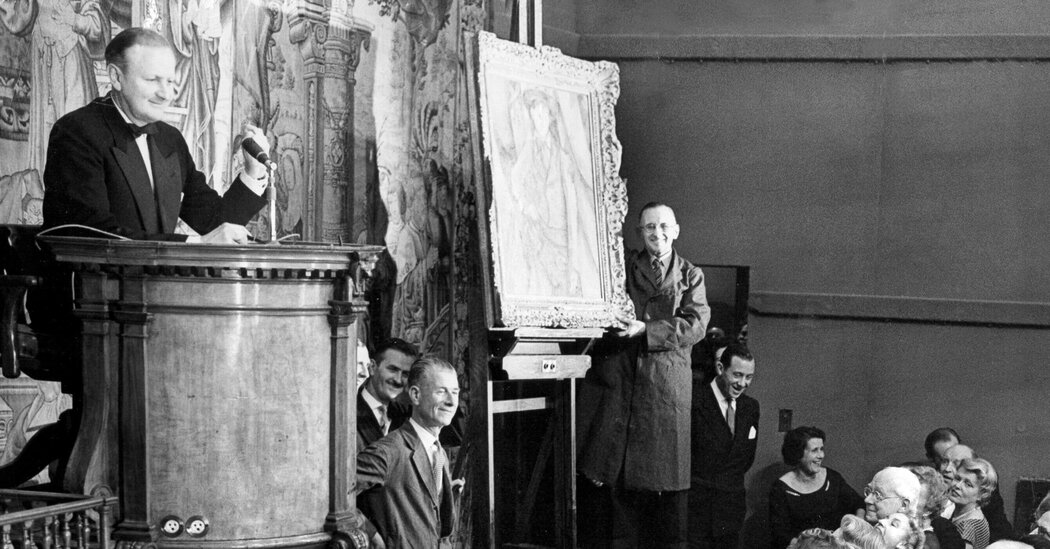His rival, the Christie’s chairman Peter Chance, was a former army officer, and stuffier. His firm fostered client loyalty by retaining staff, but suffered from “lackluster expertise,” writes Stourton, until they started to recruit Cambridge art history graduates. Stourton reports the industry gossip: “When somebody died, Peter Chance went to the funeral, and Peter Wilson went to the house.” Chance on Wilson: “That man is a swine.” Wilson’s motto? “Leave nothing to Chance.”
With improvements in travel and technology, milestones of commerce were vaulted, and each appeared to cheapen a onetime gentleman’s sport. Sotheby’s 1964 acquisition of the New York firm Parke-Bernet broadcast a message of “world domination.” To attract reluctant buyers, Wilson began publishing indexes in the London Times stock pages: Renoir up, say, 405 percent, Monet up 1,000. In 1975, Wilson and Chance seemingly conspired to invent the buyer’s premium, using the reduced commissions to attract sellers, appalling dealers.
Such changes forced innovation among the London dealers, like the secretive Wildenstein’s and Monty Bernard (who had been known to bribe train conductors to waylay rival dealers). A dense account of them canopies Stourton’s tale, organized by pecking order and specialty (never have brown furniture and Victoriana read so page-turningly). For Robin Symes, the disgraced dealer of looted antiquities, “hubris was followed by nemesis, and nobody rose higher or fell faster.”
In general, Stourton lets his quotes do the judging. They spray back at their speakers like birdshot in pheasant season. The dealer Richard Green’s favorite painting is “a sold one.” “I collect money, not art,” a Marlborough founder said. “The only decent artist is a dead artist,” quoth the dealer Julian Agnew. An impressive number of sources spoke to Stourton, with a candor only an insider of great principle could have earned. (A dramatis personae — or a map of Mayfair — wouldn’t have hurt; at times the book is a surname soup.)
As prices and stakes climbed, questions of transparency, provenance, authenticity, expertise and exhibitions grew more serious. Several young dealers emerged as scrappy, even heroic connoisseurs. Living artists, notoriously risky investments, gained traction through brand-savvy galleries like Marlborough, which championed Francis Bacon and Henry Moore, and Kasmin, whose skylighted minimalist showroom was “a machine for looking at pictures in.” Auctions began admitting living artists, too.
